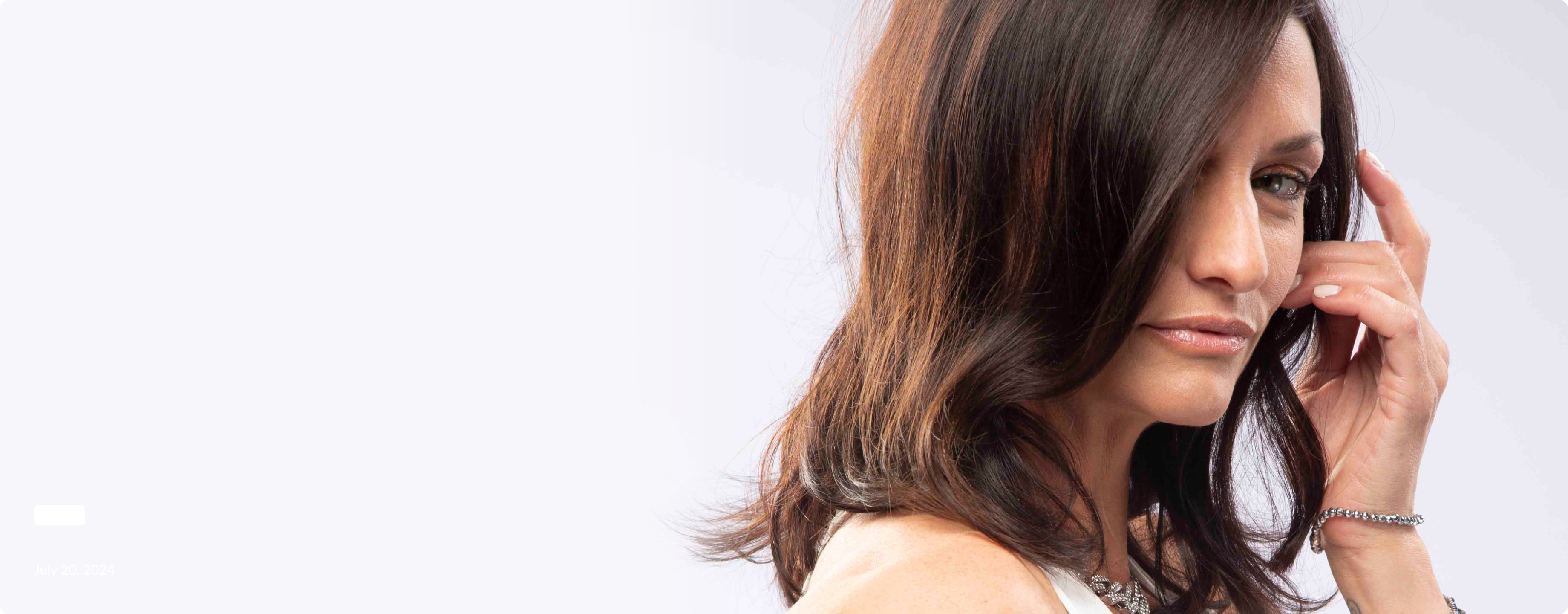In this article, we'll explore the different hair types together. Hair has three qualities: texture, porosity, and elasticity. Understanding these qualities is crucial for proper hair care and styling.
Hair Basics
Hair is a flexible, strong, horny filament. Like all hair, it is an epidermal formation implanted more or less obliquely in the skin. From the moment of conception, the color and nature of hair are determined by the laws of genetics: it is already decided whether we will be blond, black, albino, or brunette, or whether we will have curly or straight hair.
The main function of hair is to protect the scalp from heat, cold, sun, and injury. Did you know that bald people injure their heads more often than those with hair? This is precisely because hair acts like a cat's whiskers!
There are approximately 100,000 hairs in a head of black or red hair, 150,000 in a head of blonde hair, and 110,000 in a head of brunette hair. It is normal to lose between 10 and 80 hairs per day, and the average hair growth rate is about 1.2 cm per month.
Hair grows in a circular pattern, which is why it's easier to style your hair on one side than the other. Since hair is made up of dead keratinized cells, you can't heal damaged hair, but you can temporarily repair it while you wait for new growth to arrive.
Repair is most often done with protein or oil-based products, but neither of these products can permanently repair hair with damaged cuticles. Regular treatments must be used, as damaged cuticles do not close properly and do not retain treatment products.
It's only after a few shampoos that the repair product is released, hence the importance of repeating the process. It's also thanks to healthy cuticles that hair colors and other products can adhere to the hair's keratin.

Indeed, healthy cuticles close automatically after being forced open by chemical hair colors. However, when they become damaged, they become unable to close, making them unable to retain repair products for long, hence the washed-out colors and dull colorations observed in such cases.
Understanding Hair Types
1. Texture
Hair may feel soft, coarse, or waxy.
Soft hair is easy to style and generally healthy.
Naturally coarse hair often tends to be wavy or curly, has a lot of body, and is easy to volumize. If its coarse texture is the result of chemical overuse, the hair will become "static" when styling.
Waxy hair (as in Asian hair) has a glossy finish regardless of its thickness because the cuticles are flat; it is generally very shiny, but because the cuticles are very closed (flat), it is difficult to add volume, maintain a style, or even perm.
2. Porosity

If your hair is easy to cut with scissors—in other words, if you feel no resistance—it's porous. If you don't want to risk using scissors to perform this test, wet your hair. If it absorbs water very quickly, you'll know it's porous.
The main causes of hair porosity are over-bleaching and perming, improper color application, and health issues.
3. Elasticity
Elasticity is the ability of hair to stretch. It can stretch without breaking and return to its original length.
To test, take a strand of hair between your hands and stretch it slightly. Hair with low elasticity will break at the slightest tension.
Also, take a quick look at your scalp. It should have good mobility, meaning it shouldn't feel stuck to your scalp. A scalp that doesn't move, or has very limited mobility, accumulates waste, resulting in poor blood drainage, which can hinder normal hair growth.
The scalp should have a slightly pinkish color due to good blood circulation. A whitish color indicates poor circulation, and marked redness could indicate irritation or hypersensitivity.
A scalp should never be too oily or too dry. Even if it feels rough to the touch, it should be free of dry or oily dandruff, and after washing your hair, it should not emit any odor.

Although sebum is associated with oily hair, it plays an important role in hair health. This thin layer of lipids that covers the skin protects the scalp from dryness, and its high acidity prevents the growth of bacteria.
Sebum also serves to seal the skin, blocking chemicals in hair products. It also moisturizes hair and gives it more flexibility. Serum overproduction is normal during puberty. This production will normalize in adulthood and decrease significantly during old age.
External Factors Affecting Hair
External factors that influence sebaceous secretion are:
- High temperature with humid ambient air
- Ultraviolet rays (excessive irradiation which has the effect of reducing sebum production)
- Repeated shampooing with intense friction of the scalp
- A diet high in sugar
It should be noted that the consumption of vitamins A and B slows down sebaceous secretion.
Conclusion
Understanding your hair type is crucial for maintaining healthy, beautiful hair. By recognizing your hair's texture, porosity, and elasticity, you can choose the right products and treatments that will work best for you. Keep in mind that external factors like diet, environment, and hair care practices can all influence the health and appearance of your hair. Armed with this knowledge, you can make informed decisions about your hair care routine and achieve the best results for your unique hair type.

0 comments